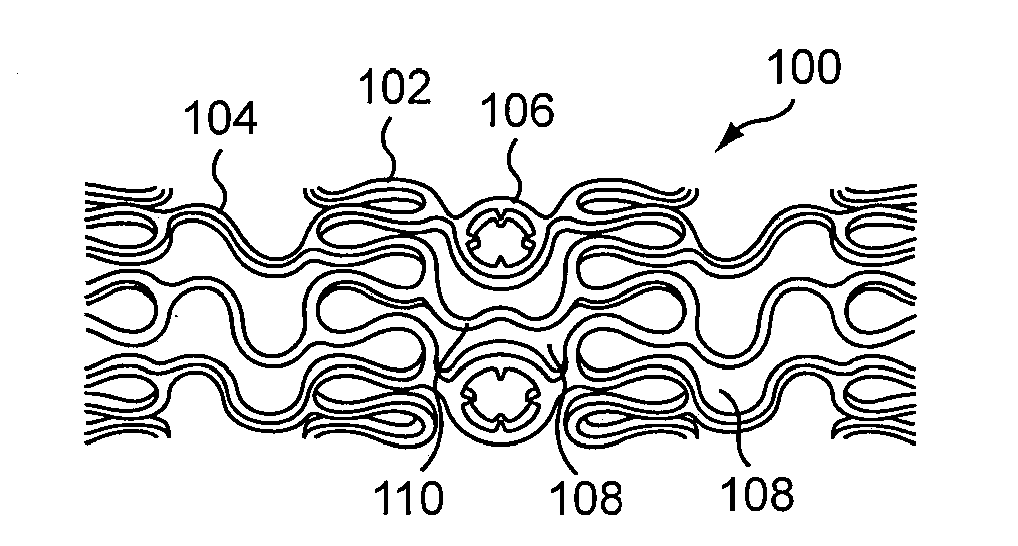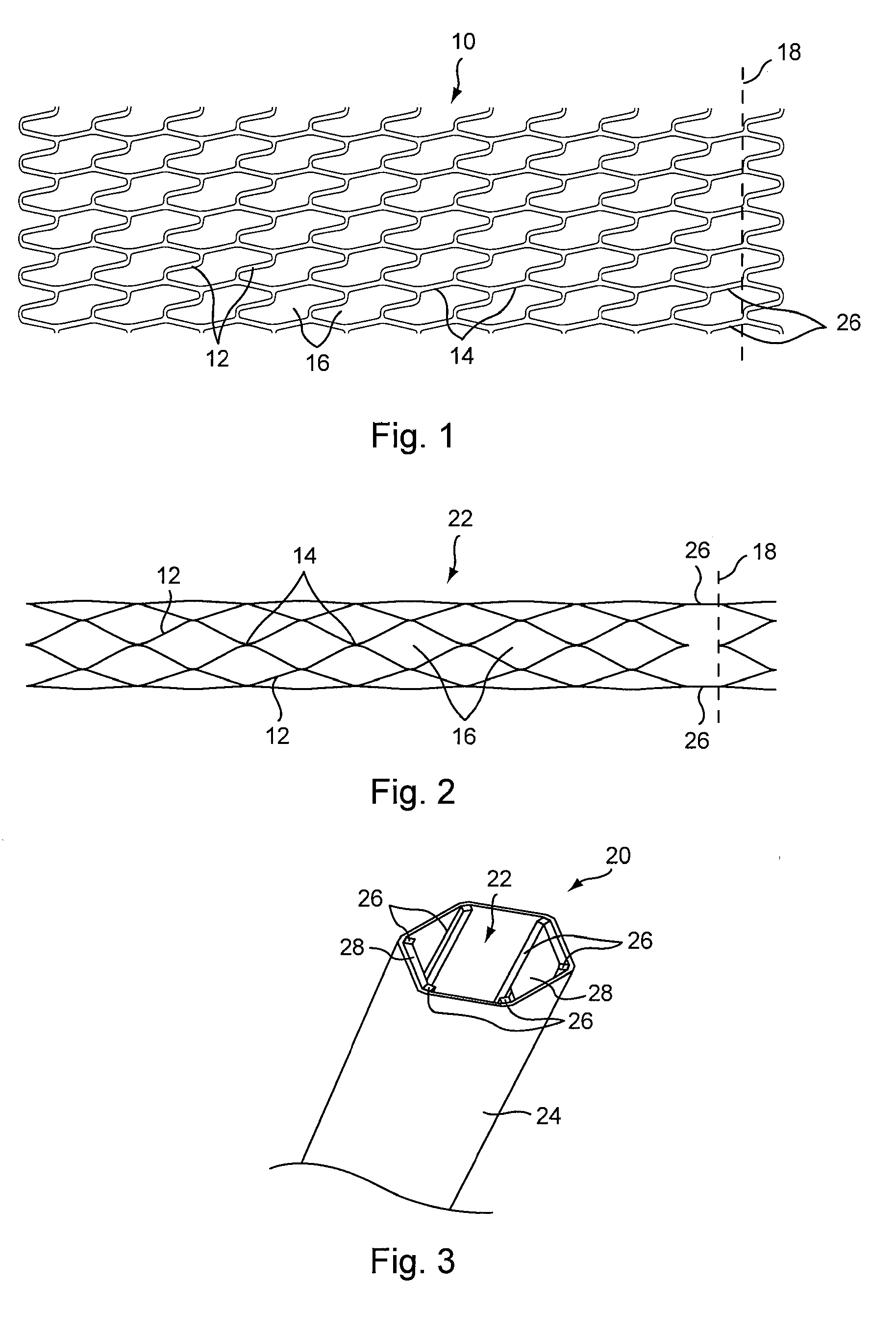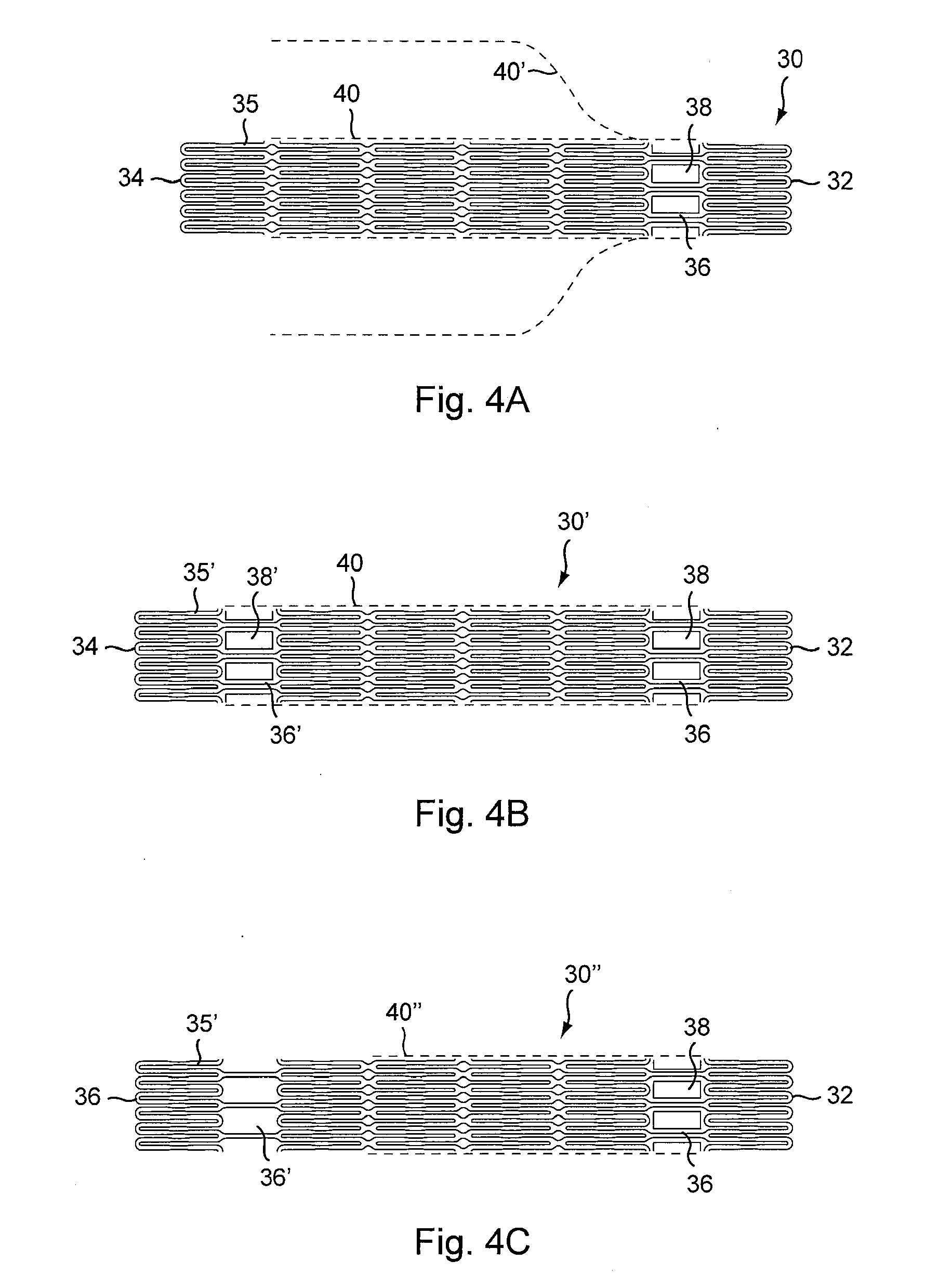Stents and Stent Grafts
a technology of stents and grafts, which is applied in the field of stents and stent grafts, can solve the problems of reducing the overall longitudinal flexibility of the implant, affecting the stability of the implant, and the device having a relatively large outside diameter (od), and achieves the effect of sufficient structural interfa
- Summary
- Abstract
- Description
- Claims
- Application Information
AI Technical Summary
Benefits of technology
Problems solved by technology
Method used
Image
Examples
Embodiment Construction
[0049]Various exemplary embodiments of the invention are described below. Reference is made to these examples in a non-limiting sense. They are provided to illustrate more broadly applicable aspects of the present invention. Various changes may be made to the invention described and equivalents may be substituted without departing from the true spirit and scope of the invention. In addition, many modifications may be made to adapt a particular situation, material, composition of matter, process, process act(s) or step(s) to the objective(s), spirit or scope of the present invention. All such modifications are intended to be within the scope of the claims made herein. The present application claims priority to U.S. Provisional Patent Application Ser. No. 61 / 035,328, filed Mar. 10, 2008, entitled “Stent-Grafts,” which is fully incorporated by reference herein.
[0050]The graft in the stent graft device can be attached to the stent in a number of different ways. The figures serve to illu...
PUM
 Login to View More
Login to View More Abstract
Description
Claims
Application Information
 Login to View More
Login to View More - R&D
- Intellectual Property
- Life Sciences
- Materials
- Tech Scout
- Unparalleled Data Quality
- Higher Quality Content
- 60% Fewer Hallucinations
Browse by: Latest US Patents, China's latest patents, Technical Efficacy Thesaurus, Application Domain, Technology Topic, Popular Technical Reports.
© 2025 PatSnap. All rights reserved.Legal|Privacy policy|Modern Slavery Act Transparency Statement|Sitemap|About US| Contact US: help@patsnap.com



